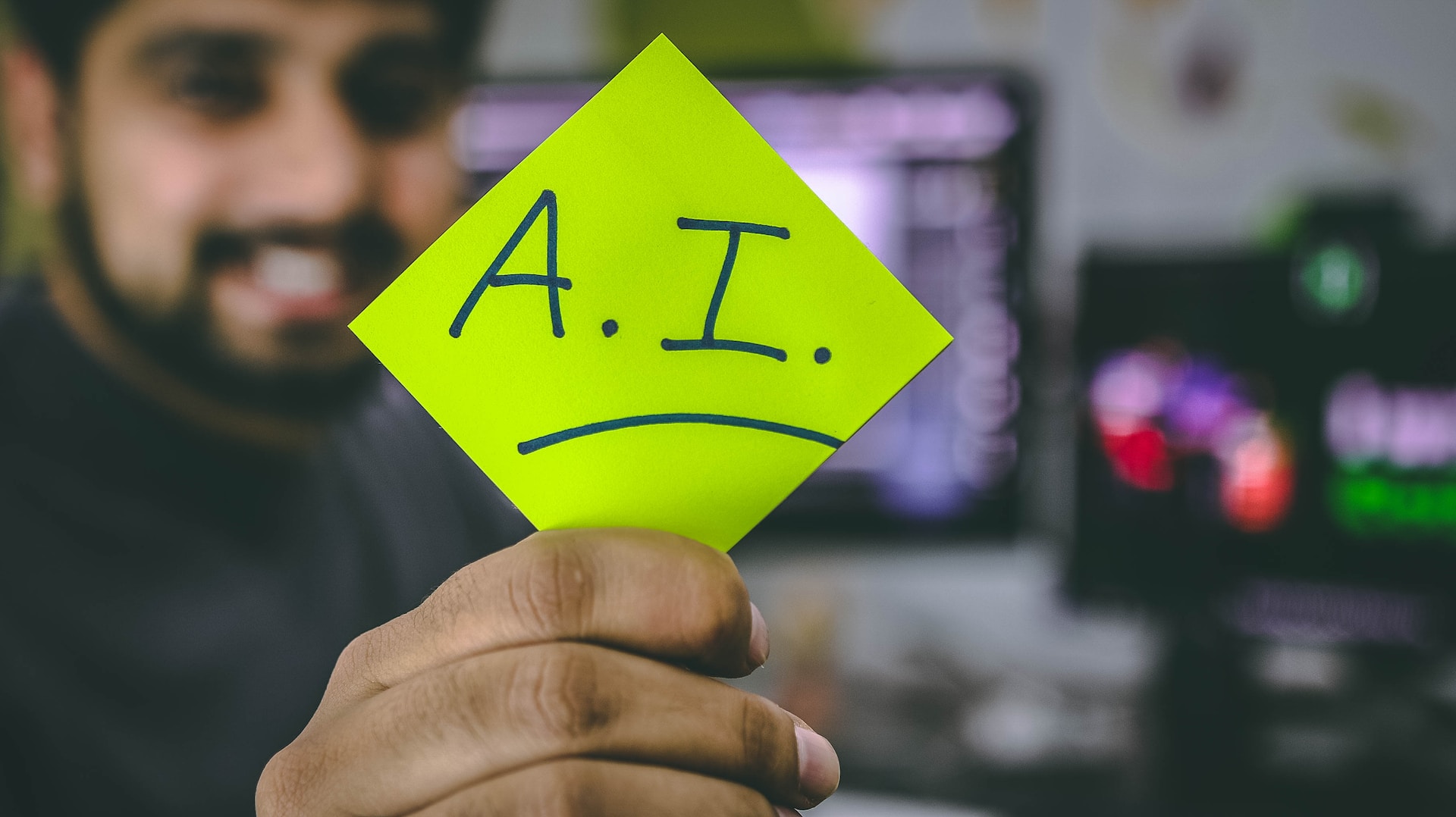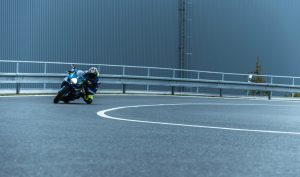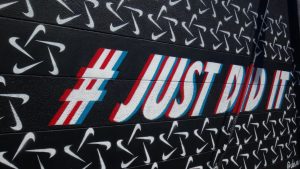US Copyright Office Cancels AI-Generated Images Registration Made Using Midjourney
Artificial Intelligence (AI) has been increasingly popular in recent years and especially in recent months since mid-year 2022 with the release of various AI-Generated images platforms such as Midjourney, Dream Studio, Dall-E, Open AI Playground, Leonardo AI etc., and also AI Chatbot platforms like ChatGPT-3 which is an AI chatbot that uses natural language processing to create humanlike conversational dialogue or prompts to answer questions and assist users with tasks like composing emails, essays, articles, code, even writing songs’ lyrics or novel.
This is a revolutionary development for creative workers and authors all over the world, but it is also a two-edged sword. AI technology can be a great tool to help them generate more creative works in a short time. But on the other hand, many AI tools are so easy to use for almost everyone that many businesses may no longer need the services of creative workers and authors. Many graphic artists, illustrators, authors, musicians, and journalists, will be out of their jobs!
Is AI technology threatening the creative industry? Apparently so. But, within the context of legal protection for AI-generated creative works, the law still takes a side that is in favour of the human authors’ original and creative works.
Table of Contents
The Cancellation of Copyright Recordation of AI-Generated Images
This is what happens recently when The United States Copyright Office (USCO) cancels a recordation certificate for a comic book titled Zarya of the Dawn (“the Work”) authored by Kristina Kashtanova and re-issue a more limited registration certificate covering only the selection, coordination and arrangement of the Work’s written and visual elements. The individual images of the comic which were generated using Midjourney’s Artificial Intelligence platform, are left out from copyright protection.
As mentioned above the Work is a “comic book”. It consists of eighteen pages, one of which is a cover. The cover page consists of an image of a young woman, the Work’s title, and the words “Kashtanova” and “Midjourney.” The remaining pages consist of mixed text and visual material. A reproduction of the cover page and the second page are provided below:
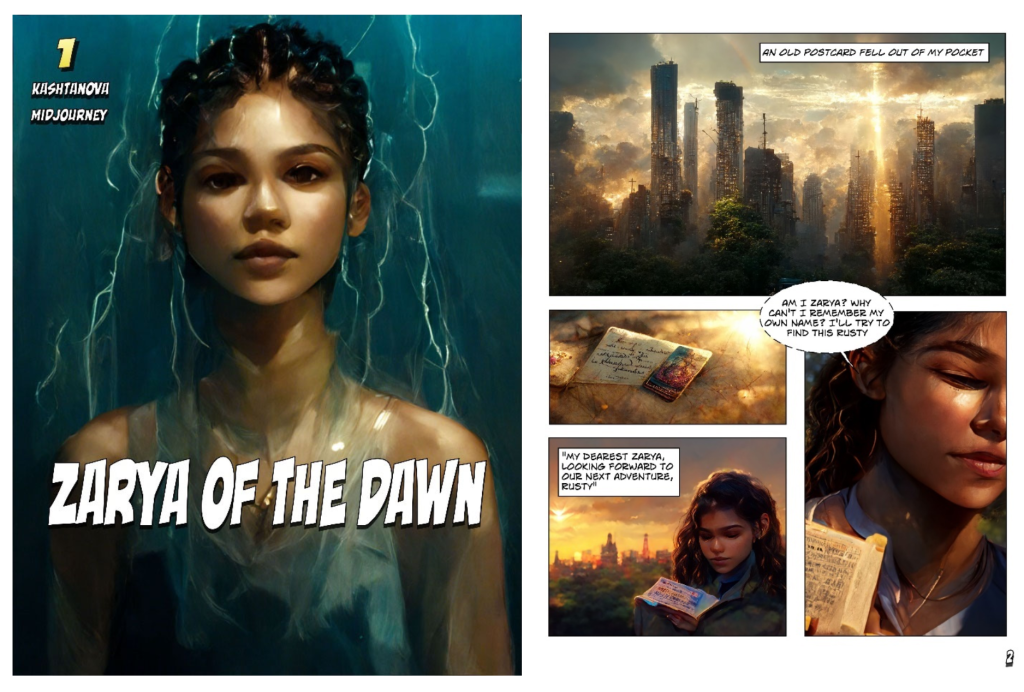
On September 15, 2022, the Work was submitted to the US Copyright Office, which promptly reviewed the application and granted registration under the number VAu001480196. Ms Kristina Kashtanova, the author of the Work, did not disclose in her application that any portion of the Work was created using artificial intelligence, nor did she disclaim any part of it.
Not long after registering the Work, the US Copyright Office became aware of statements on social media attributed to Ms Kashtanova that she had created the comic book using Midjourney artificial intelligence. USCO determined that the application was incorrect, or at a minimum, substantively incomplete and later notified Ms Kashtanova that it intended to cancel the registration unless she provided additional information in writing showing why the registration should not be cancelled.
Ms Kashtanova, represented by legal counsel from Taylor English Duma LLP, responded to the USCO’s notification by contending that the registration of the Work should not be cancelled because (1) Ms Kashtanova authored every aspect of the work, with Midjourney serving merely as an assistive tool, and, (2) alternatively, portions of the work are registrable because the text was authored by Ms Kashtanova and the Work is a copyrightable compilation due to her creative selection, coordination, and arrangement of the text and images.
How Does Midjourney Work to Generate AI Images?
To create (or to “generate” to be precise) images using Midjourney, a user must go to the Discord website or desktop application and then join the Midjourney Discord server which contains public “channels” where users can enter “text” or they call it “prompt” started by typing “/imagine…” then followed by written text description about what user wants to create.
For example, if a user wants to create an image of cute bunny images for children, he or she may type a text description or prompt like this:
/imagine white bunny with low ears, rainbow background, love, cute, happy
and based on the training data the Midjourney will generate initial 4 variations of images that are somewhat close to the user’s description. The user will pick one of the four images in order to further refine the result. This process must be repeated numerous times until the resulting image satisfies the user.
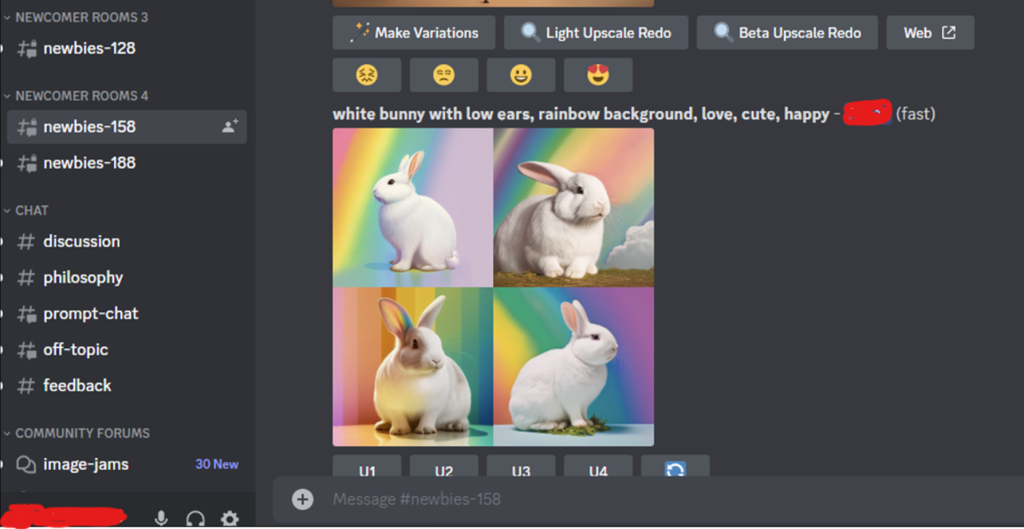
Midjourney does not interpret prompts as specific instructions to create a particular expressive result. Because Midjourney “does not understand grammar, sentence structure, or words like humans,” it instead converts words and phrases “into smaller pieces, called tokens, that can be compared to its training data and then used to generate an image.”
The process by which a Midjourney user obtains an ultimate satisfactory image through the tool is not the same as that of a human artist, writer, or photographer. As noted above, the initial prompt by a user generates four different images based on Midjourney’s training data. While additional prompts applied to one of these initial images can influence the subsequent images, the process is not controlled by the user because it is not possible to predict what Midjourney will create ahead of time.
The above process is really different from the conventional creation of a digital image using graphic design applications such as Adobe Illustrator, Inkscape, and Photoshop in which user has full control of creating the image from start to finish exactly as they want it. AI prompt-based image generation is giving little to no control for the users to create the actual image that users have in mind.
The AI image generation method is more like using a search engine or photo stock image search services to find a certain kind of images, rather than creatively creating images from scratch. It is really a matter of luck to find images that are closely similar to users’ artistic vision.
Considerations on the Copyrightability of AI-Generated Works
The US Copyright Act defines and qualifies a copyrighted work as an “original work of authorship fixed in any tangible medium of expression.” 17 U.S.C. § 102(a). The Supreme Court has explained that the term “original” consists of independent creation and sufficient creativity.
Firstly, it must have been created independently by its author. Secondly, it must exhibit a sufficient amount of creativity, beyond just minor modifications or additions. The term “works of authorship” has been consistently interpreted by courts to refer exclusively to human-created works. If non-human authorship is claimed, appellate courts have concluded that copyright does not apply to those supposed creations.
Examples of works lacking human authorship such as “a photograph taken by a monkey” and books “authored” by non-human spiritual beings. Such works can only receive copyright protection if a human has made creative choices in arranging and selecting the content.
The US Copyright Office first agrees that the text of the Work by Kashtanova was entirely written by the human author without the assistance of any generative artificial intelligence program so this element of Work is copyrightable. Secondly, The Office also agrees that the selection and arrangement of the images and text in the Work are protectable as a compilation. Copyright protects “the collection and assembling of preexisting materials or of data that are selected, coordinated, or arranged” in a sufficiently creative way. 17 U.S.C. § 101 (definition of “compilation”).
Now with regard to the illustrative elements or images in the Work, and having considered the process of AI-image generation using Midjourney, the US Copyright Offices concludes that the images generated in the comic book are not original works of authorship protected by copyright. The US Copyright Office will not register works produced by a machine or mere mechanical process that operates randomly or automatically without any creative input or intervention from a human author.
The Office views that rather than a tool that Ms Kashtanova (the author) controlled and guided to reach her desired image, Midjourney generates images in an unpredictable way. Therefore, Midjourney users cannot be considered “authors” of the images that the technology produces for copyright purposes.
Takeaways
The United States Copyright Office’s determination to cancel the copyright registration of AI-generated images holds immense significance for creative workers and authors. This decision establishes a crucial precedent in the realm of copyright law, emphasizing the importance of human authorship and creativity in creative works.
It reinforces the notion that copyright law is intended to safeguard the unique and original expressions of human beings, and not those of non-human entities. Additionally, this decision provides clarity and guidance to artists and authors, ensuring that they understand the parameters of copyright protection and can make informed choices about their creative processes.
Ultimately, the USCO’s decision underscores the significance of human ingenuity and creativity in the creative arts, reinforcing the value and importance of artistic expression.
Featured Image by Hitesh Choudhary on Unsplash
Articles
